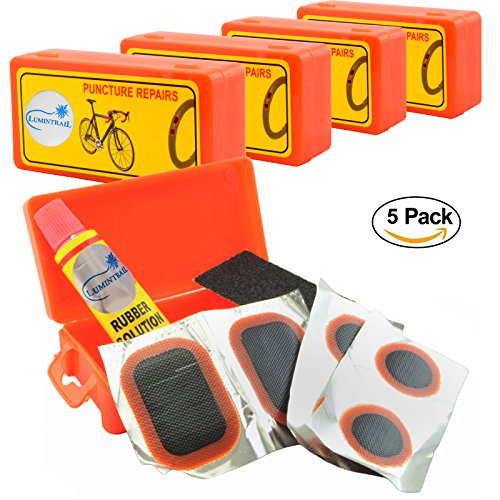We independently review everything we recommend. When you buy through our links, we may earn a commission. Learn more›
FYI
We’ve looked over this guide and stand by the advice and picks we recommend here.
If you own a bike, you need a flat-fixing kit. It’s really that simple. Sure, maybe you’ll get lucky and get a flat close to a shop, or the buses will be running on time for once, but even with all that going for you, getting stranded across town will cost you time, money, and precious sanity. You can put together a great kit in less time than it takes to read this guide.
We spoke to a broad spectrum of cyclists—from a pro racer to a bike messenger turned mechanic to a touring cyclist who has logged thousands of miles throughout Europe—to find out what items they find indispensable. We sorted through 40 tire levers, almost 30 different kinds of patches, 120 different hand pumps, and nearly 60 seat bags before we narrowed our choices for testing. And then we changed and patched tires more than 50 times, using four different bikes, five different wheels, six different tires, and almost 10 different sizes of tubes. After more than 100 hours of combined testing, we agree these essentials are some of the best you can buy.
To get started, we consulted a broad array people for this guide, with a wide variety of cycling styles. They’ve all put together kits that are unique to their personalities and needs. It’s a deep, satisfactory joy to lay out a finely curated kit, and we’re hoping you’ll find a carry method that speaks to you.
They’ve all put together kits that are unique to their personalities and needs. It’s a deep, satisfactory joy to lay out a finely curated kit, and we’re hoping you’ll find a carry method that speaks to you.
Ramona Mark’s touring kit. Photo: Ramona Mark
Scott Karoly’s commuter kit. Photo: Scott Karoly
Alison Tetrick’s road kit. Photo: Alison Tetrick
Ramona Mark’s touring kit. Photo: Ramona Mark
When I interviewed Ramona Marks, she was a mechanic at Bicycle Kitchen in LA. She has logged thousands of miles touring the world on her bike since 2010. Her kit is outfitted with gear that makes life easier for a touring cyclist, such as some full-size tools, which make frequent field repairs more manageable.
I spoke to Scott Karoly, a sales associate at Alameda Bicycle, who carries the essentials for his urban commuting, plus some special wrenches for his specific bike.
And I spoke with Alison Tetrick, a pro athlete and member of the board of directors for USA Cycling.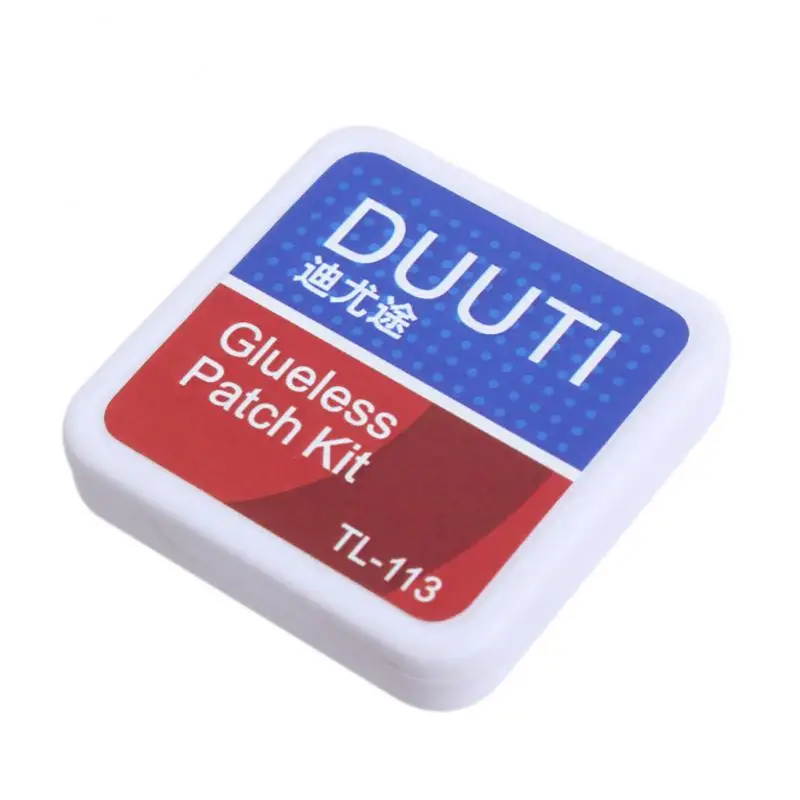 She carries a downsized road-riding kit and relies on CO2 cartridges for fast inflation, because she gets two or three flats a day, every day.
She carries a downsized road-riding kit and relies on CO2 cartridges for fast inflation, because she gets two or three flats a day, every day.
I also spoke with resident mechanic Cari Z at (the sadly now closed) Bay Area Bikes in Oakland, California, a former messenger who had a dozen sneaky tricks for changing tires, carrying tools, and preventing flats (but, alas, no photos of her bike bag).
We focused on tools that would be useful to a commuter—someone trying to use a bike as a functional way to get around town, as opposed to riding recreationally (road biking and mountain biking). That said, it’s a wild and wooly bicycling world out there, and the streets are packed with so many different bikes, all shapes and sizes, new and old. Customizing your flat-fixing kit has advantages over buying a preassembled kit that always contains a tool (or two or three) that’s a piece of junk, or you don’t need.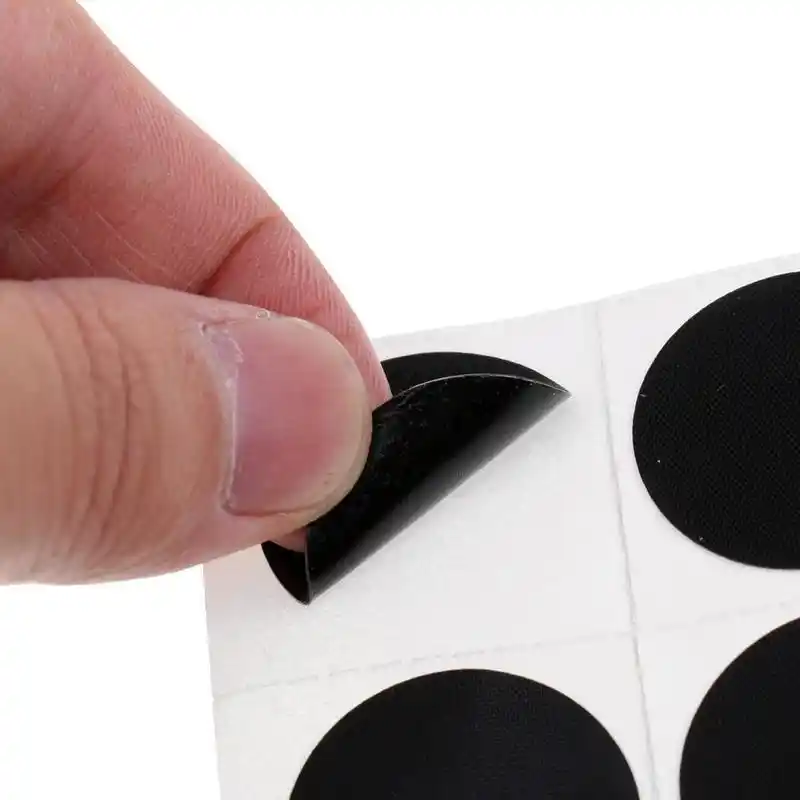 Or it’s missing something you do need. If you build your own kit, at least you know everything works. And you can add only what’s necessary for your specific bike without ending up with stuff you don’t need.
Or it’s missing something you do need. If you build your own kit, at least you know everything works. And you can add only what’s necessary for your specific bike without ending up with stuff you don’t need.
Road riders need lightweight, tiny tools that can fit into jersey pockets. A lot of those items are made of carbon fiber, which is lighter than aluminum. Other iconic trappings of road riding, like CO2 cartridges and spandex outfits, are also geared toward minimalism, but all of that downsizing comes at a cost. Commuters don’t have to be as concerned with weight, so unless you covet something specific, don’t spend the extra money.
Mountain bikers are in a different world of repair entirely, one that borders on the comedic absurd. It includes large pumps designed to fill up big, fat tires that squish over things, and a medley of assorted slimes meant to be injected into tubes or tires. In that world, the number of days it takes you to fix your tire and return from the wilderness is a badge of courage—bonus points if you’re bleeding—and we’re guessing that’s not what you’re going for next time you set out for groceries.
Commuters need products that are effective and reliable. The day you need them, they have to work. The essentials listed in this guide are the items you must have if you ever hope to get going again after having a flat. If you do nothing else, pick up these three things and take a second to learn how to use them.
A good patch will stick to your tube enough to keep air from leaking out. A great patch will act like a second skin and actually strengthen the tube where it’s applied, flexing and stretching with the tire. After 36 hours of testing, our official endorsement goes to the Rema TT 02 Touring Repair Kit. Its patches do everything other patches do, just better. The edge of the patch is also ruffled, which provides more edge surface area to bond—that’s a good thing.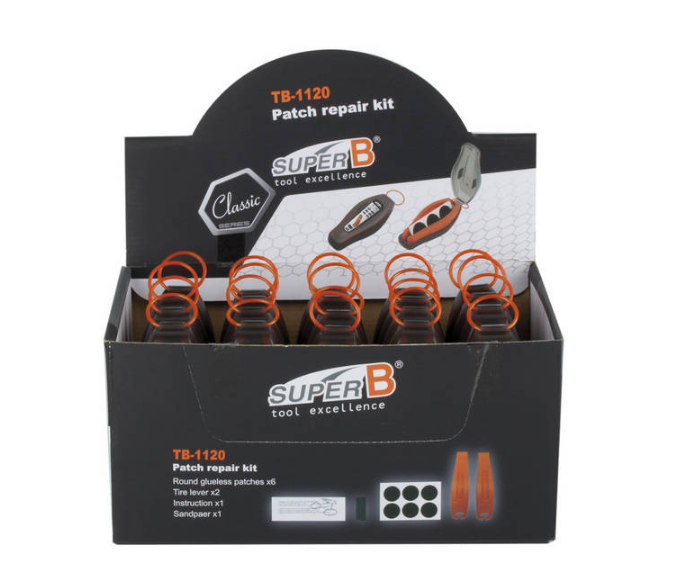
Patch kits come with patches in a few different sizes, a small bit of sandpaper, and a tube of vulcanizer. Vulcanizer is the “glue.” Cari Z, who was a mechanic at Bay Area Bikes at the time of our interview, explained, “Vulcanization is the chemical bonding process that takes place between patches” and the tube.
An up-close view of the ruffled edges on Rema’s patches. Photo: Kyle FitzgeraldThere are patches that don’t require vulcanizer—the infamous peel-and-stick. One brand, the Park Tool GP-2, has some genuinely enthusiastic endorsements, so we tested it. I applied Park Tool patches to four different tires, at three different psi levels (60, 90, and 120). Three of the four didn’t hold—two released within minutes. The fourth deflated overnight. I redid the test, but repeated a second time, they all leaked within a day.
Though I often have colleagues and acquaintances text me smug anecdotes of their peel-and-sticks working, I am not convinced they’re actually working. They could possibly be pressed firmly up against the tire rim, or some other incalculable magic, but if it were me I’d toss those in the garbage and get serious. This is bike repair, people.
They could possibly be pressed firmly up against the tire rim, or some other incalculable magic, but if it were me I’d toss those in the garbage and get serious. This is bike repair, people.
In addition to the Rema patches, put a new tire tube in your kit. The best method for dealing with a flat roadside is to swap out the tube and save the task of patching for later. If you’re not sure what size your tires are, it’s printed on the sidewall of the tire. This inner-tube buying guide has some photos of where to look. What brand is almost irrelevant as many tubes get manufactured in the same place, so whatever your local shop has behind the counter for under $10 will work fine. The only reason to spend more would be to save weight.
Now you might be wondering: “I’m carrying a tube; why carry patches at all?” As insurance for the unforeseeable. Wirecutter senior editor Christine Ryan admits she didn’t use to pack them, but said, “I’ve regretted that decision when I’ve had a flat on a ride, used my spare tube, and then, half an hour later, had a second flat.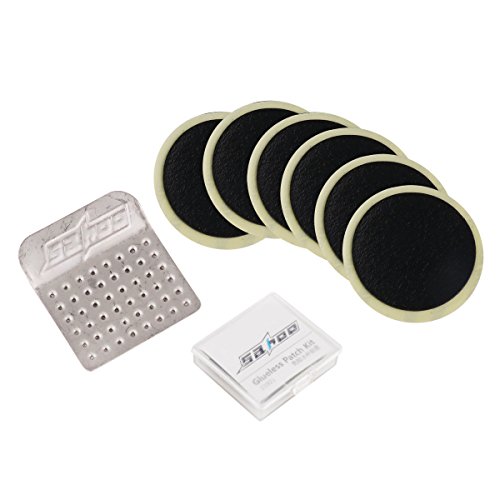 Also, lots of people aren’t very good at figuring out—or don’t take the time to figure out—what caused their flat and remove the cause: thorn, eensy bit of glass, whatever. Then they promptly have a second flat, and everyone else laughs at them.”
Also, lots of people aren’t very good at figuring out—or don’t take the time to figure out—what caused their flat and remove the cause: thorn, eensy bit of glass, whatever. Then they promptly have a second flat, and everyone else laughs at them.”
So don’t get laughed at by your cycling brethren—be the hero instead. Always check your tire for what caused the flat, get rid of it, and drag around a patch kit just in case.
Pedro’s levers are cheap, effective, light, and near indestructible.
Every expert I spoke to recommended Pedro’s Tire Levers by name. They have a wide body—a different shape than other models we tested—and that prevents breakage, but more important, the broad, flat surface area of the tip helps it stay locked under your tire. When a lever slips from under the bead of the tire, you can end up repeatedly scraping your knuckles on the spokes of the wheel, which is so annoying. Pedro’s levers are small enough to fit into a saddlebag, are sold widely in bike shops, and even come with a lifetime guarantee. If one breaks, Pedro’s will replace it.
When a lever slips from under the bead of the tire, you can end up repeatedly scraping your knuckles on the spokes of the wheel, which is so annoying. Pedro’s levers are small enough to fit into a saddlebag, are sold widely in bike shops, and even come with a lifetime guarantee. If one breaks, Pedro’s will replace it.
More than any other tool in the kit, a reliable lever makes changing a tire easier, especially if you have road bike tires, which are difficult to remove. However, throughout testing, levers seemed to be the one item more prone to failure and poor design than anything else. For example, I found a random orange lever floating around my basement and I threw it in the test pool for fun—it seemed solid enough ... until I began prying at the rim of a tire. It bent directly in half, slowly and smoothly, like taffy, and then was boomerang shaped forevermore.
The Pedro’s lever slipped only once throughout testing, though that may have been my fault because I was spaced out after changing 16 different tires.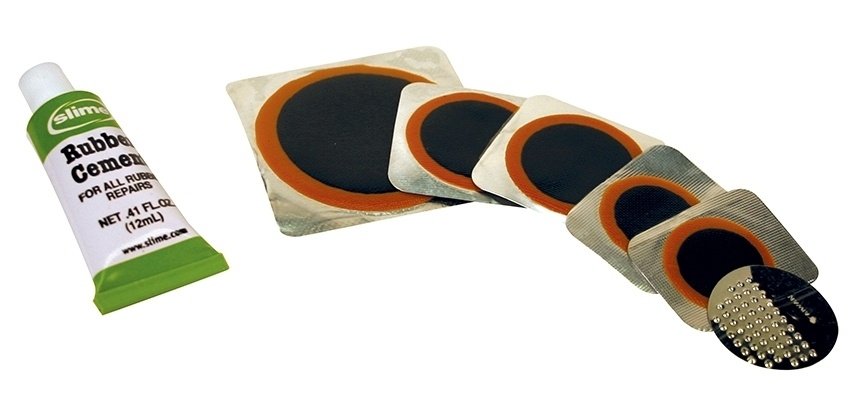 So they’re not foolproof, but they are far and away more reliable than the next closest competitor, from Park Tool, because the small, rounded tip on that one is hard to keep seated under the tire. Not impossible, but I wouldn’t choose it over Pedro’s.
So they’re not foolproof, but they are far and away more reliable than the next closest competitor, from Park Tool, because the small, rounded tip on that one is hard to keep seated under the tire. Not impossible, but I wouldn’t choose it over Pedro’s.
Versatile and compact, this pump will fill the flat-fixing needs of any commuter while on the road. (It also comes in a slightly larger, but otherwise identical, “medium” size.)
Bicycle hand pumps aren’t substitutes for floor pumps. They will never work as well—pumping a tire without using the ground for leverage is awkward at best and demoralizing at worst. So consider this an on-the-road model only, and if you’re looking for a floor pump, check out our full guide.
The Lezyne Pressure Drive’s solid aluminum body, smooth pumping action, removable hose, and secure pump-to-valve attachment make for a handheld pump that is functional and efficient. Among all the pumps we tested, nothing reached this level of quality at the same price. (This pump comes in two sizes, small and medium. We tested the small version, but the medium is, apart from being just under two inches longer and half an ounce heavier, functionally the same.)
The standout feature is the detachable hose that accommodates both Presta and Schrader valves. To use the pump, remove the hose from its storage place inside the pump’s body. Each end of the hose is clearly marked with either “Presta” or “Schrader.” Screw one end onto the pump’s body. Then, instead of relying on friction or a thumb lock—the other two common methods of attaching a handheld pump to a valve—you screw the other end onto the threaded tip of your valve. Every time, the seal held fast no matter how hard we pumped.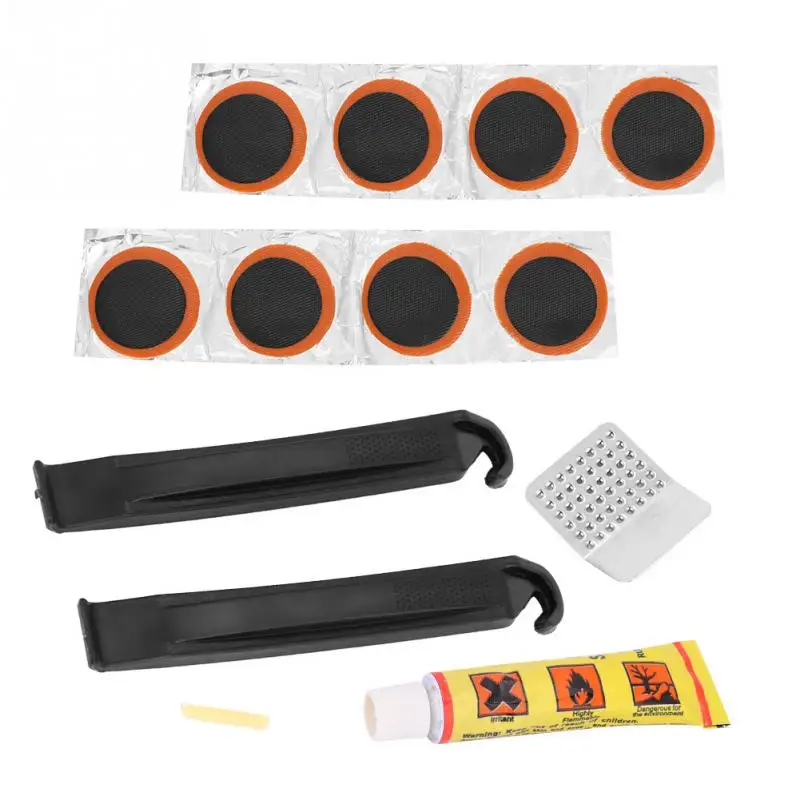 And like all hose attachments, this one reduces the odds of bending or even breaking the valve.
And like all hose attachments, this one reduces the odds of bending or even breaking the valve.
The Pressure Drive is advertised as a low-volume, high-pressure pump for road bikes, and we were able to get to 100 psi on our 700c tire in 300 strokes. Even though that’s a serious, sweaty workout, it’s a high bar to set for a handheld pump, one that not all of the pumps we tested could accomplish. Knowing that high-pressure road tires are this pump’s specialty, we were surprised we could fill a lower-pressure tire without taking a long, long time. It took us 150 strokes to fill a hybrid tire to 35 psi, and 290 strokes to get a mountain bike tire to 30 psi. That may sound like a lot, but those are very respectable numbers, especially given the pump’s small size.
Presta-valve partisans take note: The air-bleed button comes in handy when you’re removing the pump hose. Video: Kyle FitzgeraldWith pumps like this, which attach to a valve stem by screwing it on, it’s possible to unscrew a removable valve core while removing your pump. (There goes all your hard-earned air, in a rush!) If you like to use valves with removable cores—you know who you are—the Pressure Drive has an integrated valve core tool. This is also what you need to fix a leaky stem, which could be the cause of your flat in the first place.
(There goes all your hard-earned air, in a rush!) If you like to use valves with removable cores—you know who you are—the Pressure Drive has an integrated valve core tool. This is also what you need to fix a leaky stem, which could be the cause of your flat in the first place.
If you ride a mountain bike or any kind of tire that has a very low psi rating, a high-volume, low-pressure pump may be a better choice to take on the trail with you. The Lezyne Alloy Drive is the equivalent of the Pressure Drive for mountain bike tires.
Lezyne also provides a two-year warranty that covers manufacturer defects, and you can replace worn-out O-rings and the like with replacement parts from the Lezyne site.
This sleek, pocketable, minimalistic tool gets most jobs done.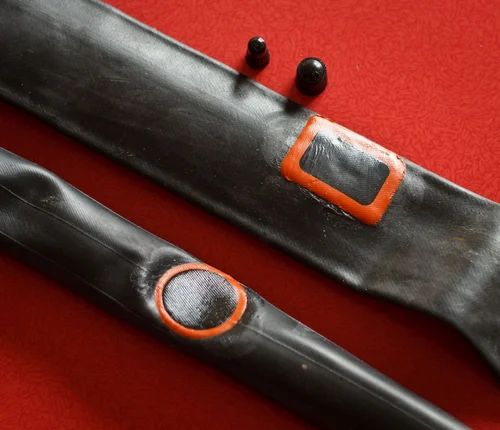
Writer Peter Flax, the former editor-in-chief of Bicycling magazine, rode over 1,000 miles and tested 15 tools for our now-archived full-length guide to multi-tools, and he concluded the Topeak Mini 9 is the best for casual cyclists. It’s tiny, it’s light, it’s easier to get some leverage with than other tools that have different designs. It’s not meant for serious wrenching on your bike, but it’s good for on-the-fly adjustments.
It includes nine tools: seven hex bolts, one torx bolt (the star-shaped one), and a Phillips screwdriver (also the star-shaped one). Like Peter says in our guide, if you have a newer mountain bike or road bike it pays to take a quick look at what types of tools you need, as torx bolts are becoming more common. And a quick glance at the bottom of your shoes or derailleur bolts will confirm if a Phillips head is the right choice.
Otherwise, this tool should serve the average commuter well. Specifically, we think you’ll find the size 4, 5, and 6 hex keys, extremely common sizes in bicycles, very helpful. They’ll adjust seat-post heights or let you remove the saddle entirely, or tighten a loose stem that’s always rattling apart. The Phillips head will tighten loose bolts on shoe cleats or the rear derailleur. The most common use for the torx would be adjusting disc brakes if you have ’em.
They’ll adjust seat-post heights or let you remove the saddle entirely, or tighten a loose stem that’s always rattling apart. The Phillips head will tighten loose bolts on shoe cleats or the rear derailleur. The most common use for the torx would be adjusting disc brakes if you have ’em.
Constructed identically to models that cost twice as much, this bag comes in three sizes. The medium one will hold a spare tube, a pair of tire levels, and a multi-tool—most of what you need to get back on your way.
The BV Bicycle Strap-On Saddle Bag is the best option for your money. Sure, it’s some random brand, but after we compared eight popular models, we noticed it’s identical to the better-known versions, has less Velcro (which is a big advantage), and costs half as much.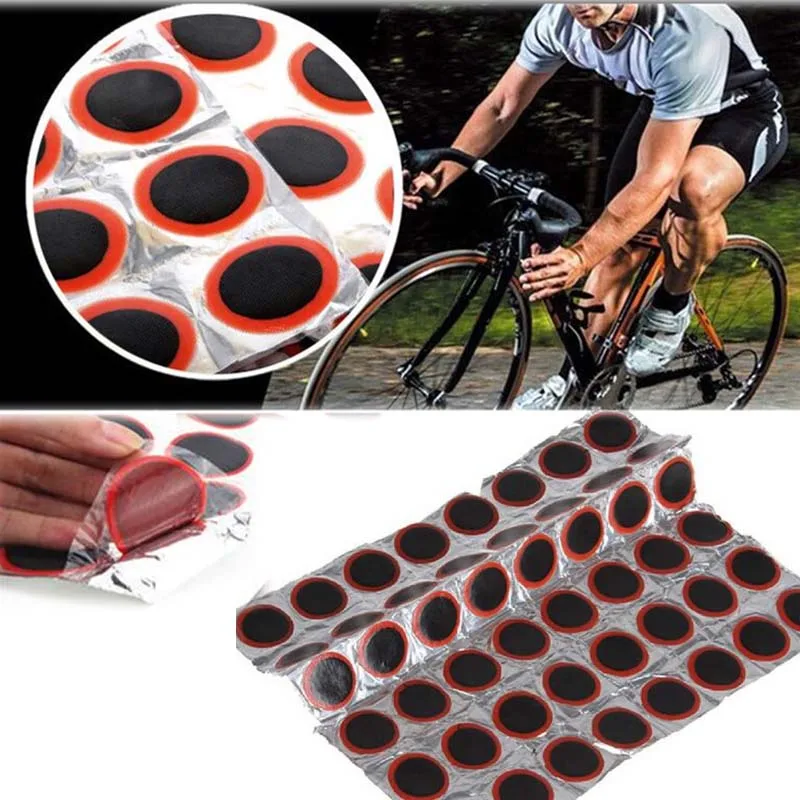 (It comes in three sizes: small, medium, and large.)
(It comes in three sizes: small, medium, and large.)
A size medium BV seat bag (left), and the astonishingly similar-looking Serfas Speed Bag (also a medium). Photo: Kyle Fitzgerald
This time, the Serfas is on the left—see its Velcro strap sticking up, ready to abrade your shorts? Photo: Kyle Fitzgerald
A size medium BV seat bag (left), and the astonishingly similar-looking Serfas Speed Bag (also a medium). Photo: Kyle Fitzgerald
On the left in the photo above is the medium-size version of our pick, the BV, and on the right the Serfas Speed Bag, another option much loved by Amazon users. They’re both made from the same pattern and same materials, down to the mesh and key fob in the interior. The BV, however, is half the price.
One key difference, which you can see in the photo, is that the BV uses buckles instead of Velcro on the straps that attach the bag to the underside of the saddle, something much more important than it may seem. A pair of bike shorts (or any shorts) will shred quickly if they’re rubbing against that tiny bit of Velcro protruding from the side of the bag, and the Velcro sure to destroy expensive sweaters and gym clothes if you stuff the bag into your backpack or messenger bag.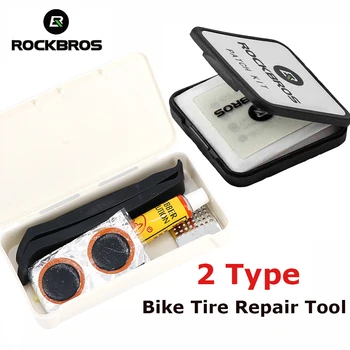
The fabric attachment system is low-tech, but that seems to be helpful, as it can adapt to seat rails of different widths. One fancier option you might see on more expensive seat bags is a quick-release mount that you install under your saddle. But those have a fixed width, and therefore can fit under seats with only those exact specs. Brooks saddles, for example, are too wide for such mounts.
Still, these things are fairly standardized and if you have a newer bike it’s likely you’ll have no issue getting a quick release under there if you want—but check your bike first. And as such, we’ve found the adaptability of the strap mount to be a great advantage.
Which size is right for you? It depends. Seat bags aren’t supposed to carry windbreakers or bike locks or animals. They are meant for emergency tools.
Hello, world. Photo: Kyle FitzgeraldThis (see the photo above) is how your patch supplies fit into the size medium BV seat bag, or 100ish cubic inches. Tube sizes vary widely—this one is smallish, for a 700c road tire. A 26-inch tire, like you would see on a hybrid bike, is much bigger.
A 26-inch tire, like you would see on a hybrid bike, is much bigger.
In spite of seat bags’ diminutive size, a lot of people really, really want them to accommodate more stuff. If that’s you, the medium and large seat bag (but not the small) have an extendable gill at the bottom, which you can see in the image up top. It zips open to create more room. With it unzipped, we could cram a wallet, keys, and phone inside the medium as well.
One flaw? Seat bags can block taillights. This one has a loop on the outside you can clip your blinker to. Seat bags also typically do not fit hand pumps. No big deal, just toss the pump into your bag, stick it in a jersey pocket, or mount it to your bike (the Lezyne Pressure Drive comes with a mount).
Many bikes, including older models and track bikes, have bolts attaching the wheels to the frame instead of quick-release levers.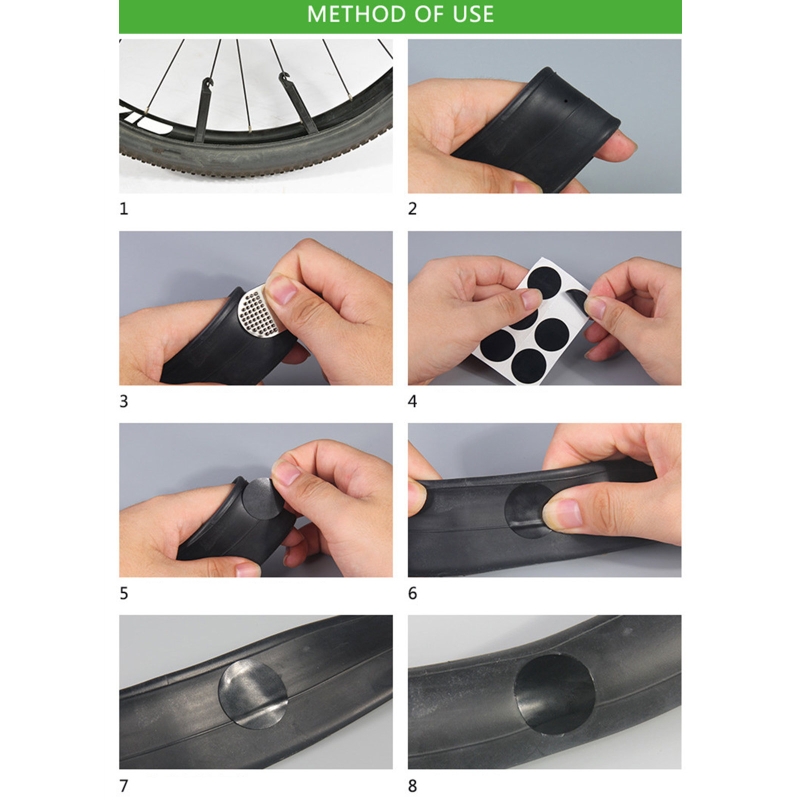 If your wheels are bolted on, in most cases you’ll need a 15 mm wrench to remove them. We didn’t test wrenches, because there aren’t that many tiny 15 mm wrenches, but the GearWrench 15mm 12-Point Stubby Combination Wrench is perfect for stuffing into a flat kit, and Amazon reviewers seem to think the same. Our experts also recommended the Surly Jethro Tule, but it’s expensive and harder to find.
If your wheels are bolted on, in most cases you’ll need a 15 mm wrench to remove them. We didn’t test wrenches, because there aren’t that many tiny 15 mm wrenches, but the GearWrench 15mm 12-Point Stubby Combination Wrench is perfect for stuffing into a flat kit, and Amazon reviewers seem to think the same. Our experts also recommended the Surly Jethro Tule, but it’s expensive and harder to find.
First, I researched. I looked at Amazon’s top-rated products and their user reviews. Then I consulted Bicycling magazine, Gear Junkie, Bike Radar, Outside, and the occasional bit by Lennard Zinn via Velonews. I also found some worthwhile discussions at Bike Forums. Then I spoke with four experts, Ramona Marks, Scott Karoly, Cari Z, and Alison Tetrick, riders from all across the spectrum, who tour, repair, and race.
We used paint pens to keep track of which patches we used on which tubes, but they also come in handy to mark where the actual hole is once you’ve located it. Photo: Eve O’Neill
Photo: Eve O’Neill
The array of levers we tested, from left, were the Park Tool TL-1 lever, Pedro’s Tire Lever, Quik Stik, and the Crankbrothers Speedier Lever. Photo: Eve O’Neill
Here, the collection of handheld pumps we tested. Photo: Eve O’Neill
This is where the rubber met the road … or the tire lever met the rubber. Photo: Eve O’Neill
We used paint pens to keep track of which patches we used on which tubes, but they also come in handy to mark where the actual hole is once you’ve located it. Photo: Eve O’Neill
Based on what we found, we chose the most relevant items and used them all. To test patches, I repaired holes using four different types of patches, from Novara (REI’s now-discontinued house brand), Park Tool, and Rema. Patching a tube isn’t hard but there are a few tricks, and the key was attention to detail and patience. I was extremely diligent in following proper patch procedure, which includes a thorough sanding of the entire area to be patched (for max stickiness) and properly letting the vulcanizer dry on both surfaces before applying. For the peel-and-stick patches, I went so far as to prep the area with canned air to ensure as tight a seal as we could possibly muster.
For the peel-and-stick patches, I went so far as to prep the area with canned air to ensure as tight a seal as we could possibly muster.
I tested four popular levers, including the Crankbrothers Speedier Lever, a Quik Stik, Pedro’s, and the ubiquitous blue Park Tool. We changed four different types of tires (mountain, hybrid, road, and track) with four different psi levels (40, 60, 90, 110) and watched how each performed.
I chose to test these four levers after eliminating everything out there that’s not appropriate for a roadside emergency kit. That includes metal levers. They’re durable, but according to touring cyclist Ramona Marks, “Metal tire levers are trouble. It’s possible to rip your tube even with the plastic ones if you’re not careful, so metal is out of the question, and you don’t want to put pressure against the wheel rim with a metal lever.”
If you do, you’re asking for a bent rim, which means buying a new wheel. We also eliminated metal-core levers, which are metal levers with a plastic outside coating.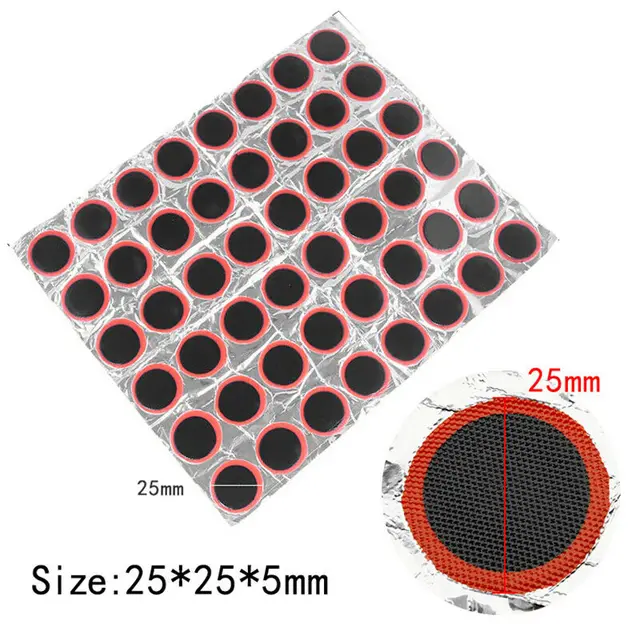 I eliminated everything that looked cheap, bendable, or breakable. I also eliminated long, large single levers that would be more comfortable sitting on your at-home tool bench and difficult to carry on a ride.
I eliminated everything that looked cheap, bendable, or breakable. I also eliminated long, large single levers that would be more comfortable sitting on your at-home tool bench and difficult to carry on a ride.
We bumped a lot of product out of the test pool for hand pumps, too. You don’t need a lot of specialized design when it comes to a hand pump, so we set aside carbon models and hand pumps with two-stage designs. We also didn’t consider CO2 cartridges for this guide, though I’m 100 percent aware that there are commuters who use and love them.
First, carbon. You already know you don’t need it for your casual weekend pursuits, because you’re not counting ounces the way a professional road racer would. But to quote a years-old article from VeloNews, “Remember that professional athletes operate in an entirely different environment than the rest of us. They are all very close to each other in terms of fitness, and they are also all very close to being the absolute best a human being can be.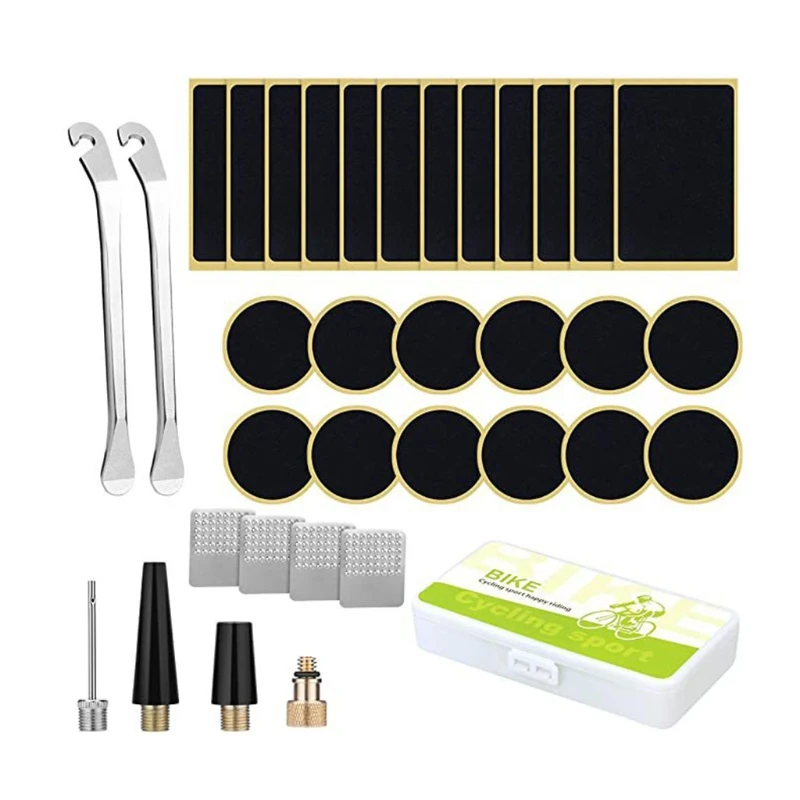 In short, you’re much better off upgrading your legs and dropping body fat through proper training and diet.”
In short, you’re much better off upgrading your legs and dropping body fat through proper training and diet.”
As a tester and editor subjected to a relentless onslaught of press releases highlighting the benefits of new, lightweight, (and expensive) gear, this reverse sentiment delighted me. It’s honest, and accurate.
Next, two-stage designs. There are two types of hand pump. HV (high-volume) pumps, ones that pump a lot of air but don’t have a lot of pressure, which are used for mountain bikes. The Lezyne Alloy Drive is a high-volume pump. Then there are HP (high-pressure) pumps, which pump a small amount of air but can inflate to very high pressures and are used on road bikes. Our top pick is a high-pressure pump.
A two-stage hand pump tries to marry the best features of both types of pumps: the quick inflation of high volume that can achieve the higher psi ranges of high pressure. But to steal a quote from our floor pump guide, “You pump eight times or you pump 10 times—what does it matter?” That’s a quote from Daimeon Shanks, who at the time was a mechanic for the Garmin-Sharp pro tour team—that’s right, Tour de France, baby.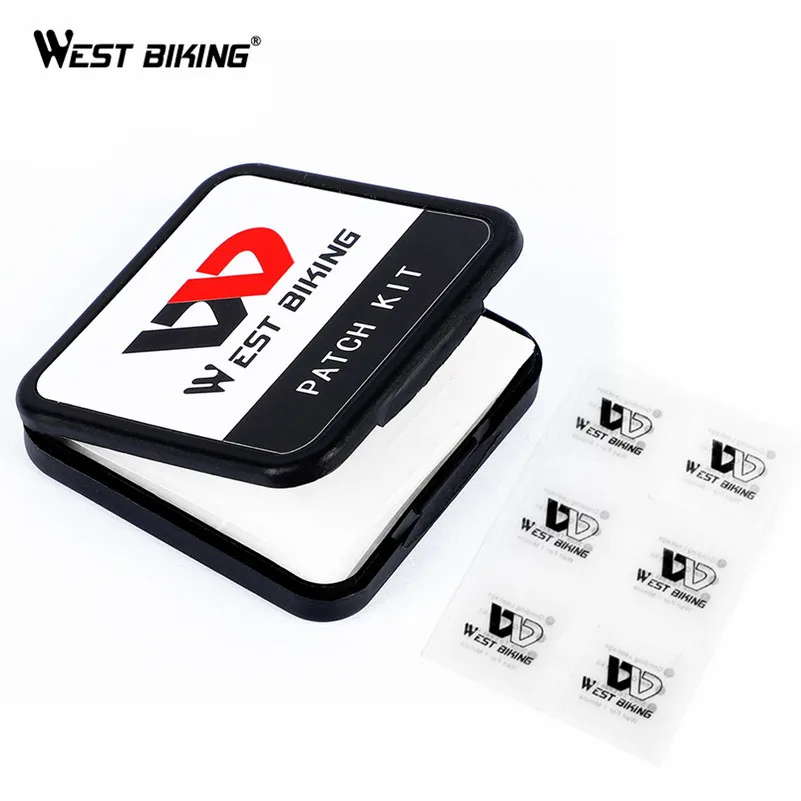
Basically, you’re stuck with toggling between systems for the advantage of a few pumps, and it doesn’t seem worth it. In the original iteration of this guide, I tested 12 pumps and inflated three different tires completely full to their psi rating, and measured how many pumps it took. Yasuda did similarly for his revamped full-length exploration. That’s 36 tires, and I can guarantee there is no difference between 50 pumps and 100—it’s all terrible.
Finally, comparing seat bags was fun. The identical construction of every model revealed itself immediately. That always feels like a win. Then we used them: attached them all to the bike, inspected them for nefarious Velcro, and vetted basic usability to determine the best option.
We like, and recommend, the Crankbrothers Speedier Lever.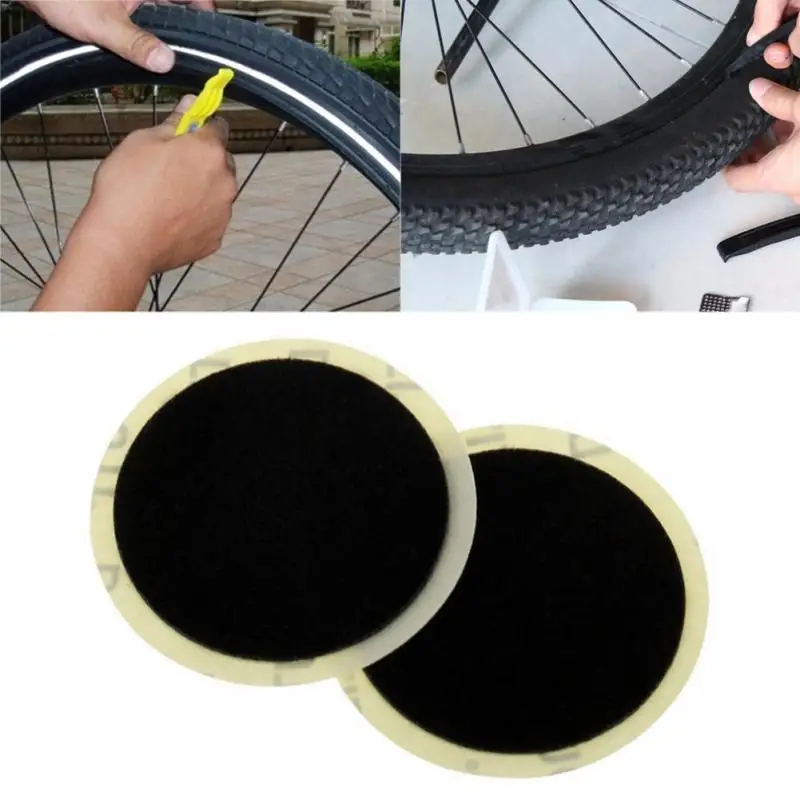 If you have to pick only one, go with the Pedro’s. But if you want a backup or have some hard tires to unseat, Crankbrothers is a great choice. It’s only one lever (as opposed to a set of two, like the Pedro’s) and it’s longer, so we didn’t pick it over the Pedro’s for portability reasons. But it’s an excellent tool. It has a wide handle you can grip with your whole hand. Like the Pedro’s, the tip is the right size and shape to prevent slipping and stay in place, and the shape of the handle happens to protect your knuckles if you do slip. Even in situations where I didn’t need it, I liked having it because it made me feel like a pro.
If you have to pick only one, go with the Pedro’s. But if you want a backup or have some hard tires to unseat, Crankbrothers is a great choice. It’s only one lever (as opposed to a set of two, like the Pedro’s) and it’s longer, so we didn’t pick it over the Pedro’s for portability reasons. But it’s an excellent tool. It has a wide handle you can grip with your whole hand. Like the Pedro’s, the tip is the right size and shape to prevent slipping and stay in place, and the shape of the handle happens to protect your knuckles if you do slip. Even in situations where I didn’t need it, I liked having it because it made me feel like a pro.
Park Tool’s TL-1 Levers were Pedro’s stiffest competition because they’re so pervasive, but not from a literal stiffness standpoint. Bike shop employees had plenty of tales of broken Park Tools—they had none about the Pedro’s. In our testing the Park Tool levers slipped, too. Park Tool released a new version, the TL-1.2 Levers, which we’ll take a look at.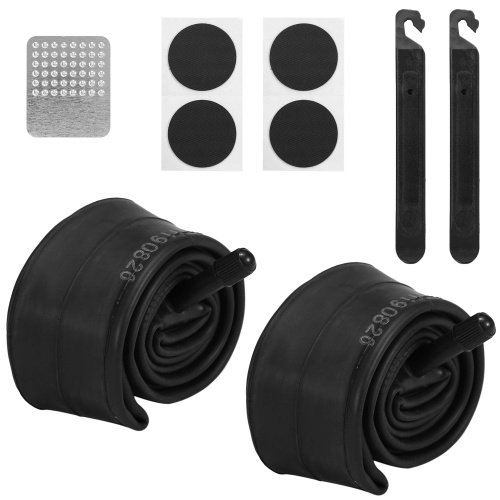
People who use Quik Stiks love them. Ours removed most tires with the ease that proponents swear by. But they struggled with the road tires. The tips aren’t as broad or chisel-like as the Crankbrothers Speedier Lever’s and are harder to work in tight situations.
The Serfas Speed Bag has the same design as the BV, but is about twice as expensive. It also attaches with Velcro, which isn’t ideal.
Topeak’s Aero Wedge Pack is a slightly different shape and size than the other bags we tested, and it worked fine, but it’s more expensive and didn’t have anything better to offer than our pick.
The mount for the Topeak Aero Wedge with QuickClick did fit my seat, and the device worked as advertised. But for compatibility reasons, we like the basic models for most people.
I used the Lezyne Micro Caddy to see if a size below small would be an option for commuters, but it’s not big enough to hold larger tubes, the sleeves inside of it for levers can’t fit the wide Pedro’s, and it couldn’t fit my multi-tool (I have a pretty big one).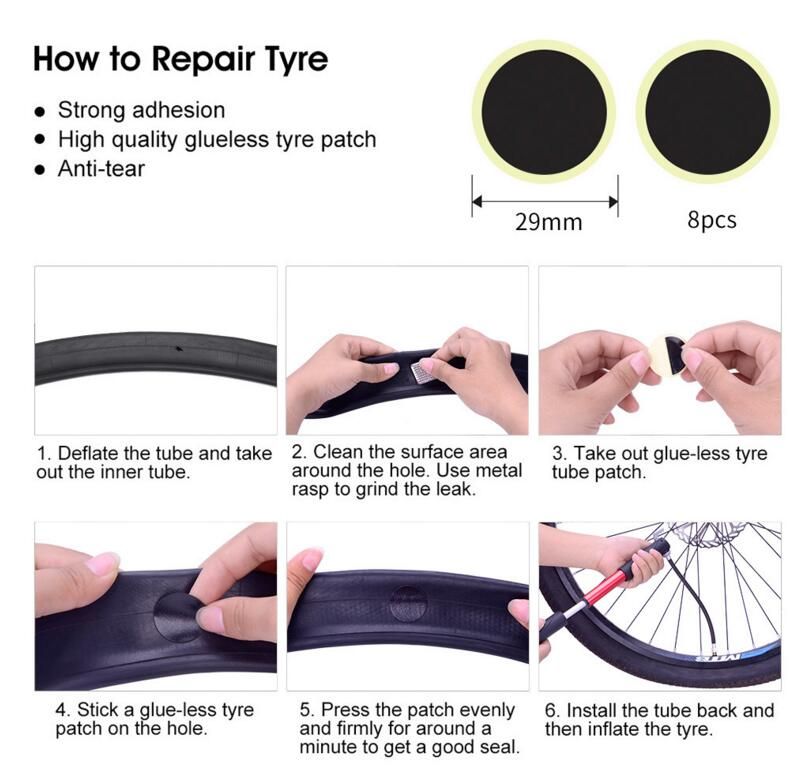 Small is good, but this is too small, unless you’re a road bike rider.
Small is good, but this is too small, unless you’re a road bike rider.
I love the design of the Lezyne Road Caddy, which opens like a clamshell to reveal your repair kit and then folds away into the perfect shape to store in a bag or backpack. But again, this is designed specifically for road bikes and can’t fit a larger tube, restricting its practicality.
This article was edited by Christine Ryan.
Cari Z, then mechanic at Bay Area Bikes and former messenger, interview
Ramona Marks, bicycle tourer and former mechanic, interview
Alison Tetrick, pro cyclist, interview
Stephen Regenold, Hose-Equipped Mini Bike Pump Put to Test, Gear Junkie, July 5, 2013
Lennard Zinn, Technical FAQ with Lennard Zinn: Blowing up tires, taking them off, and more, Velonews, October 19, 2010
Lennard Zinn, Technical Q&A with Lennard Zinn – Large molecules and short frames, Velonews, February 3, 2009
Aaron Gulley, 8 Biking Essentials under $6, Outside, September 6, 2013
Jim Gourley, Bike weight and the myth of ‘fast’ bikes, Velo News, August 6, 2014
Scott Karoly, Alameda Bicycle, in-person interview, June 1, 2014
Eve O'Neill
Eve O'Neill is a former senior staff writer reporting on travel and outdoors at Wirecutter.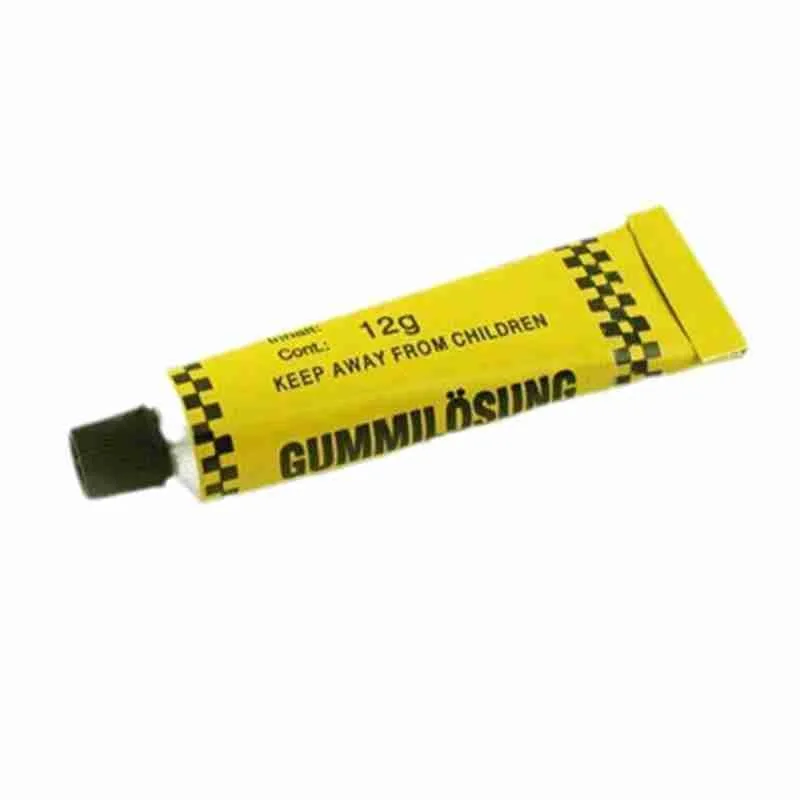 She can remember the titles on her childhood bookshelf that set her in this direction: Into Thin Air, On The Road, The Call of the Wild. She has always been drawn to ideas about how to relate to, and play in, the wilderness.
She can remember the titles on her childhood bookshelf that set her in this direction: Into Thin Air, On The Road, The Call of the Wild. She has always been drawn to ideas about how to relate to, and play in, the wilderness.
by Eve O'Neill
So you’ve bought a bike (or dug your old one out of the garage). Here are some essential but inexpensive accessories to keep you safe and happy on the road.
by Christine Ryan
After 30-plus hours of research and testing, we think the Delta Cycle Michelangelo Gravity Stand is the best bike rack for storing bikes in limited-space homes.
by Eve O'Neill
After spending three years testing dozens of panniers, we’ve chosen six that’ll be great for daily duty no matter what you’re toting or where you’re going.
by Wirecutter Staff
Hard-core bike commuters share seven items—from storm-worthy gloves to rugged tires—that keep them (and their stuff) safe and dry in the winter.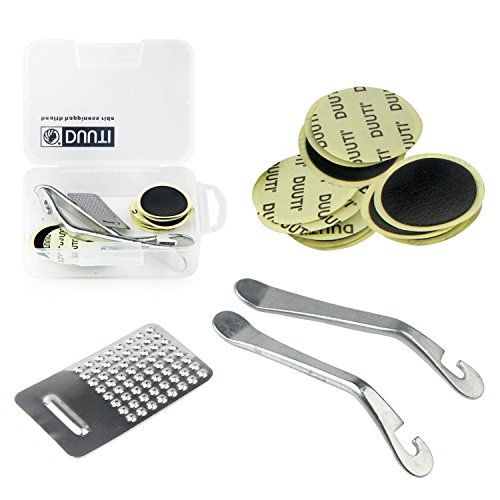
Wirecutter is the product recommendation service from The New York Times. Our journalists combine independent research with (occasionally) over-the-top testing to save people time, energy and money when making buying decisions. Whether it's finding great products or discovering helpful advice, we'll help you get it right (the first time).
Dismiss
Whether you fix it at home or at the roadside, patching your own inner tubes using a puncture repair kit is the environmentally and budget-conscious thing to do.
We have tested seven popular flat repair kits, considering the size of the container, the pre-sticking prep and the patches themselves, along with how easy they were to use and how long they lasted.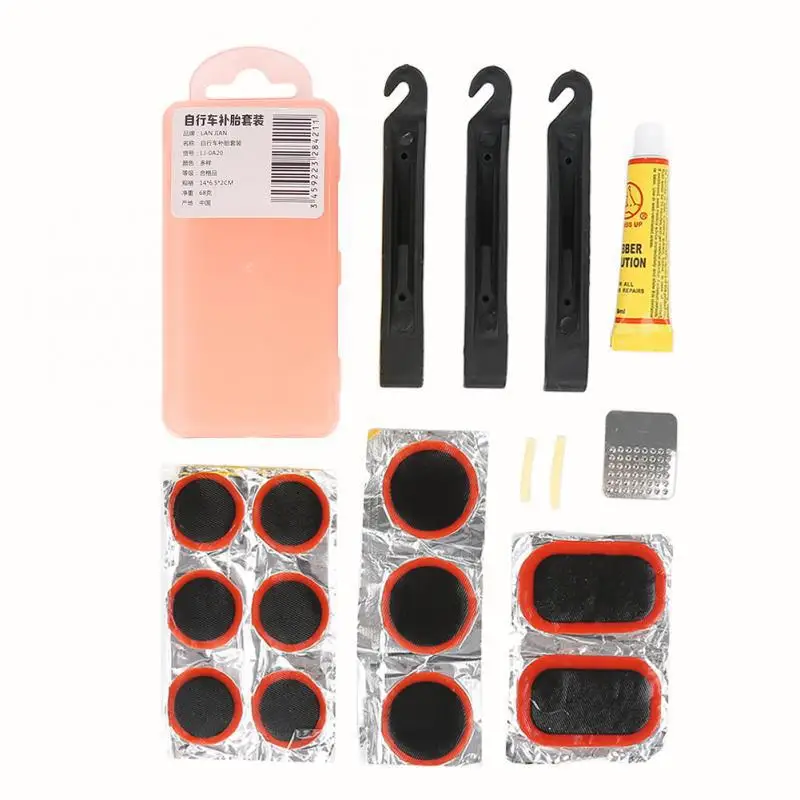
Just how do you go about testing a patch kit? Rather than wait for the inevitable, we assaulted an inner tube with a pointy implement, then slit it with a knife.
That left two puncture wounds plus a centimetre long slash, which we felt represented the most common leaks – a hole brought about by broken glass or a thorn and the pinch puncture, typically caused by a pothole.
On one hole we just slapped on a patch to see how it fared, on the other two we prepared as per the instructions, then headed out on the road to see what happened...
 99
99Products appearing in Cyclist buyer's guides are independently selected by our editorial team. Cyclist may earn an affiliate commission if you make a purchase through a retailer link. Read our reviews policy here.
German brand Rema Tip Top is the Old Spice of inner tube repair. It’s the one your dad used, and every decent shop sells. Arriving in a little box packed with the best glue, the best patches, and a little square of hard-wearing emery cloth, you can find different versions suited to road, touring, or mountain bike width tubes.
Ensuring you get the best-sized patches, this will stop them distorting the shape of the tube once attached. However, even for road use, we favour the TT02 Touring kit for its slightly larger patches which are better able to deal with snakebites or big cuts.
Regardless of which you go for, all Rema patches have double scalloped edges to ensure excellent bonding.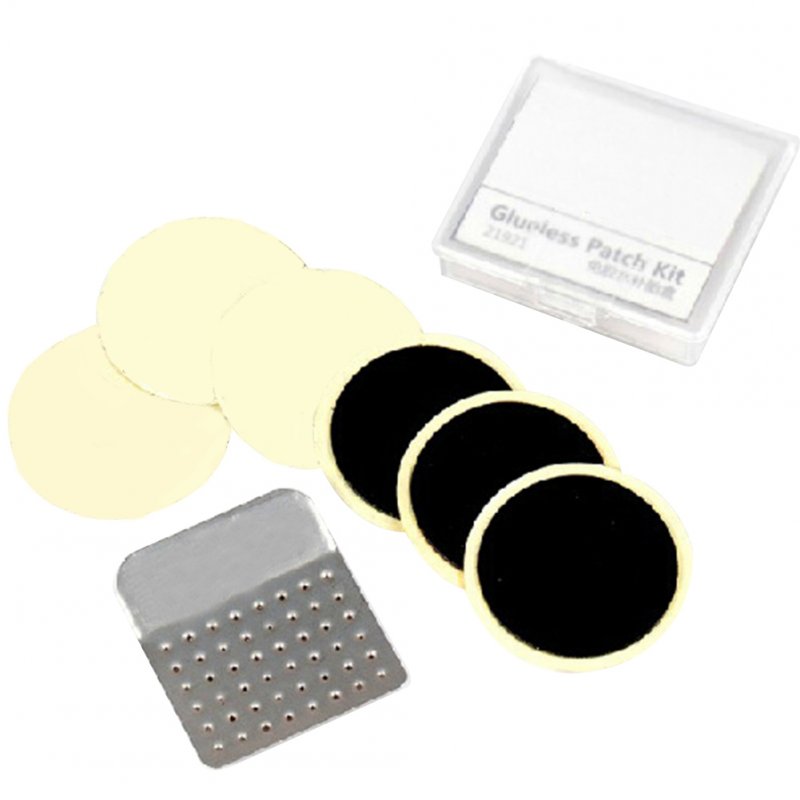 If you’ve ever wondered what the little latex straw is for, the answer is repairing the inside of your valve cores. So now you know.
If you’ve ever wondered what the little latex straw is for, the answer is repairing the inside of your valve cores. So now you know.
Coming from Wiggle’s own range of tools, this Lifeline eight-piece set is a cyclist’s staple. Formed of six patches, four tapered-edge 20mm versions along with two 30×20mm rectangles, it’s a vulcanising set that also includes glue and sandpaper.
It may be a budget kit but we can’t fault it for performance. Our three test holes were all covered well. With way more glue than is strictly necessary, it can be liberally applied to ensure the edges stay in place.
The patches’ slightly thinner and more flexible construction also means they wrap around the tube well.
 99
99Glued patches are the most reliable option, but if you can’t be bothered, glueless ones can work.
ParkTool’s instructions state that you need to lightly scuff the tube, peel the patch from the backing and press firmly into place (what could be easier?) although it’s worth mentioning that the surface also needs to be clean and dry (not so easy on a wet ride).
Although the sandpaper again proved awkwardly small, we had great success with the Super Patch. The patches themselves are extremely sticky, which is where their transparency again comes in useful, helping make sure you patch the right spot.
Lezyne’s Smart kit is aptly named. The smallest kit in our round-up, it not only offers six super-thin self-adhesive 25mm circular patches and a metal scuffer, but also a 30mm by 50mm tyre boot (not pictured).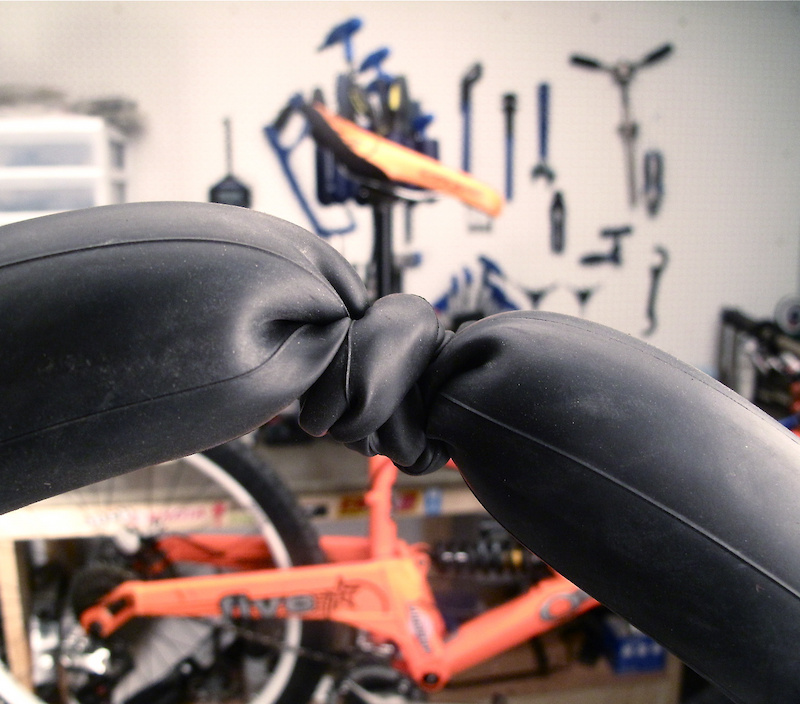
This doubles up as an instruction sheet and stops the tube bulging out through serious cuts in the tyre. Few others include a boot as standard.
The grater/scuffer is small and fiddly to use and seems very aggressive, so care is required to ensure an even surface is created. The patches are thin but mightily effective.
Working well with or without the scuffing, they contour around the diameter and over seams brilliantly. Overall, we were well impressed.
Forget your 6-pack, Nutrak generously give you a 10-pack in this repair kit. Mounted on foil, the ten patches are identical, measuring 25mm round.
Thin and flexible, with tapered edges, the patches aim to work with the shape of the tube and prevent the edges peeling while providing excellent protection.
Being a vulcanising patch there is a rubber solution and preparatory sandpaper included, too.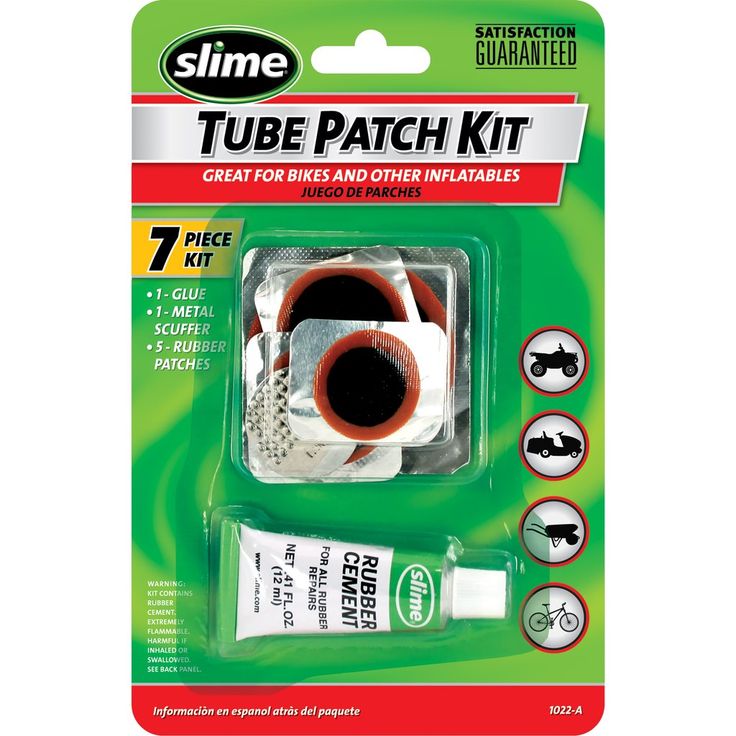
Again supplied with more than ample glue, Nutrak’s repair kit did a great job of sealing our three holes, Nutrak’s patches also proved more flexible than some others so despite coming in one size, they covered our self-inflicted rubber wounds just beautifully.
Birzman has taken a slightly different approach to other brands, not only in its patches but its packaging, too. A rather stylish, mid-sized plastic box contains three square patches of the glueless variety, each measuring 30mm square, along with a short-term tyre boot (34mm by 42mm) plus a metal stainless steel scuffer built into the lid.
By giving the aggressive metal scuffer a holder, it’s much easier to use than some of the others on test.
The patches, meanwhile, were soft and flexible enough to conform well to the tube, although interestingly it was possible to see the 10mm cut bulging and lifting the patch slightly, meaning we had to reapply the first patch we attempted to apply.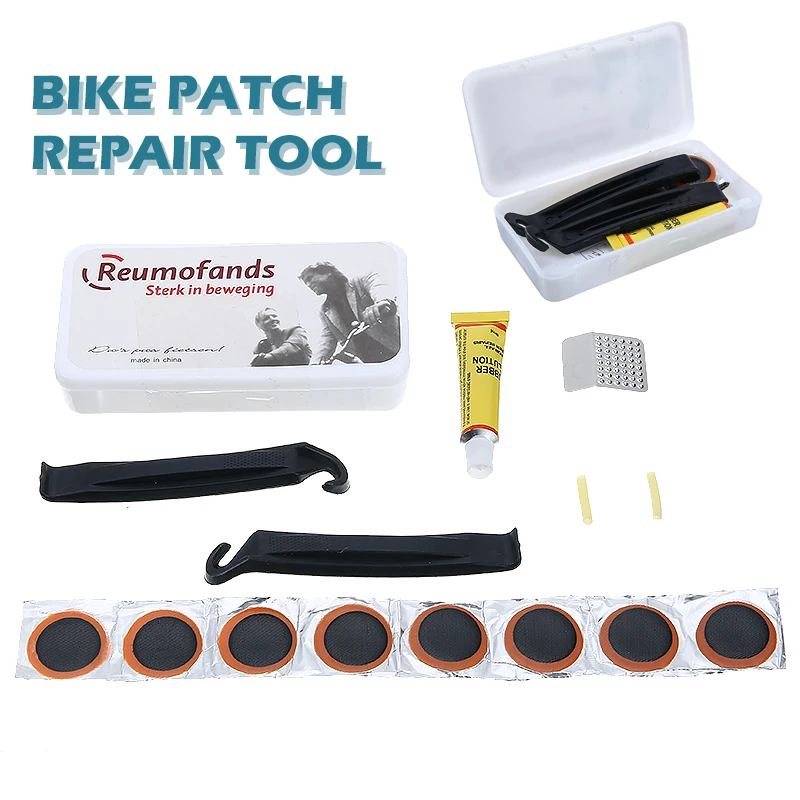
Packing three pairs of patches, the VP-1 will cover most of your hole-sealing options as standard thanks to the 20mm and 25mm round options, plus an oval one measuring 25mm by 35mm.
Being a vulcanising kit, it includes sandpaper for priming the tube prior to applying the glue and the patch.
These were the thickest patches on test, and though they adhere well enough in the centre they did struggle to wrap around the inner tube’s diameter. The result? We had to glue them on twice.
Fortunately, there’s plenty of glue in that small tube. Different patch sizes are a helpful inclusion, too.
Got the tools you need? now Read the Cyclist guide to repairing an inner tube
June 9, 2017
A puncture of a wheel (more precisely, its chamber) always happens suddenly.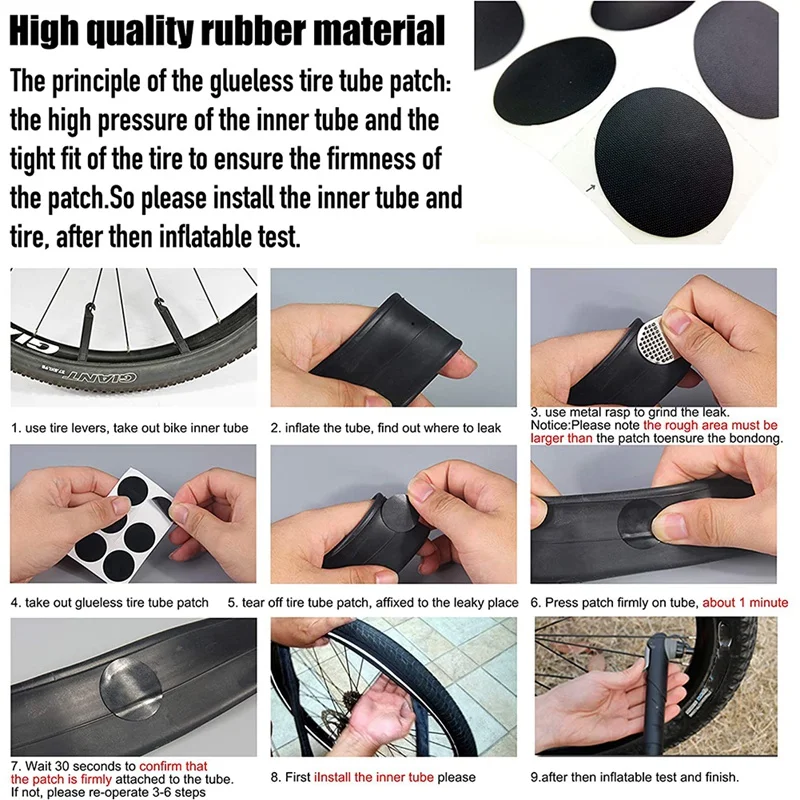 If trouble has overtaken you near the house or any other housing, it is not so difficult to find tools and seal the puncture site. If there is a bike service or shop nearby, they will always tell you how to change the camera on the rear or front wheel of the bike, and for a fee, they will do everything themselves. But if the puncture occurred in nature, far from any benefits of civilization, you will have to rely only on your own strength and the available repair kit. nine0003
If trouble has overtaken you near the house or any other housing, it is not so difficult to find tools and seal the puncture site. If there is a bike service or shop nearby, they will always tell you how to change the camera on the rear or front wheel of the bike, and for a fee, they will do everything themselves. But if the puncture occurred in nature, far from any benefits of civilization, you will have to rely only on your own strength and the available repair kit. nine0003
When traveling far from civilization, your own repair kit is the only thing that will help with a puncture. You need to select it carefully.
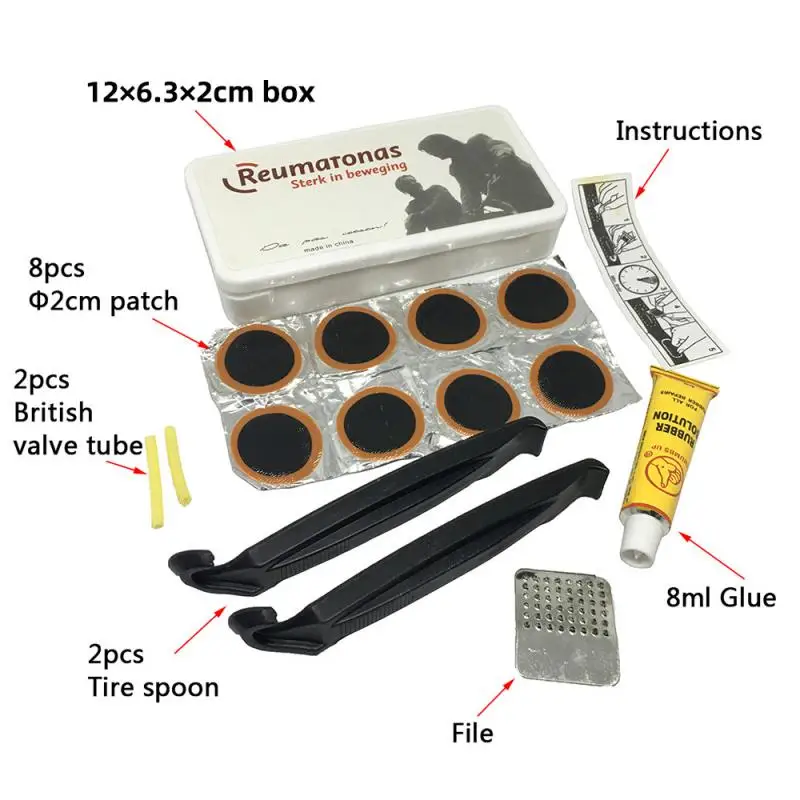 nine0020
nine0020
And then an unpleasant moment came - the bicycle wheel was punctured. You should start with a visual inspection of the tire. In some cases, if the hole is very large, it helps to immediately determine the puncture site. For convenience, this place can be immediately marked with a pen, marker, piece of charcoal, chalk, or in any other suitable way. Even if the intended location of the hole is found, it is still recommended to fully check the entire wheel, clearing it of debris. It may well be that there are several punctures. nine0003
For convenience, this place can be immediately marked with a pen, marker, piece of charcoal, chalk, or in any other suitable way. Even if the intended location of the hole is found, it is still recommended to fully check the entire wheel, clearing it of debris. It may well be that there are several punctures. nine0003
After inspection, remove the wheel (using the appropriate wrench from the repair kit). Now you need to remove the tire from the rim and get the camera out of it. It will be difficult to do this without the side rails included in the repair kit described above. It is necessary to insert the beads between the tire and the rim and pull them, gradually removing the tire. Removing the inner tube is usually easy, but if the tire is too stiff, it may be necessary to re-use the beads in the same way, only now they will need to be inserted not between the rim and the tire, but between the tire and the inner tube. If at the previous step the alleged puncture site has already been found and marked, it is recommended to additionally mark the same area on the camera.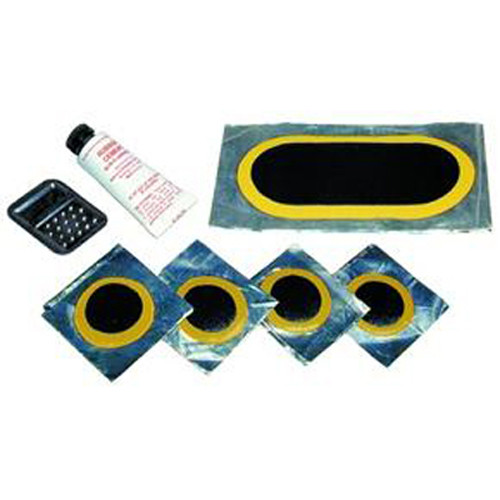 More clearly, how to remove or change a tire with a camera on a bicycle, is shown in this video:
More clearly, how to remove or change a tire with a camera on a bicycle, is shown in this video:
When the camera is removed, you need to find the puncture site on it. If it is already checked, it will be easier to search, but you still need to check the camera completely. To do this, you need to pump it up and by ear determine where the air comes from. If the hole is large enough, then this is not difficult to do, but if it is very small, you will have to act differently. You will need a container of water. It is most convenient to use a basin, but it is difficult to find it in the field. In this case, any body of water is suitable: a river, a lake, a reservoir, etc. You need to place an inflated chamber in the water and check where the air bubbles come from. This is the puncture site. It is important to remember that for repairs, you must first allow the camera to dry.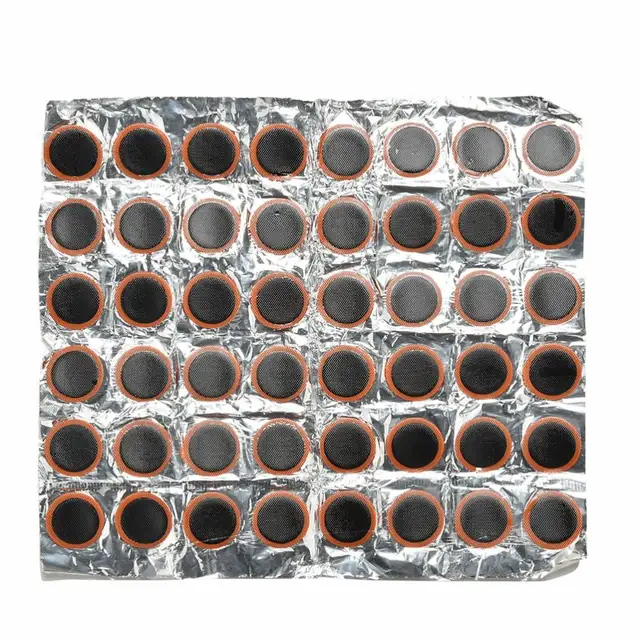 But that is not all. While the chamber dries, it is recommended to carefully check the inner surface of the tire. There may be glass particles, thorns, and other similar elements that made a hole in the chamber and can make a new one. They need to be removed. nine0003
But that is not all. While the chamber dries, it is recommended to carefully check the inner surface of the tire. There may be glass particles, thorns, and other similar elements that made a hole in the chamber and can make a new one. They need to be removed. nine0003
Once the hole is found, there is no other option but to patch or change the bike tube. With the replacement, everything is simple: we take out the broken camera, change it to a new one and install it back. But with a patch, the situation is more complicated. First of all, it is necessary to carefully process the puncture site and everything around it with sandpaper. A rough surface will allow you to better fix the patch. Now dripping glue. One drop is enough, which should be rubbed with a thin layer around the hole in a radius of about 2 cm. Then the glue should be allowed to dry a little and repeat the same procedure several times until the glossy glue layer becomes matte. Only now you can glue the patch.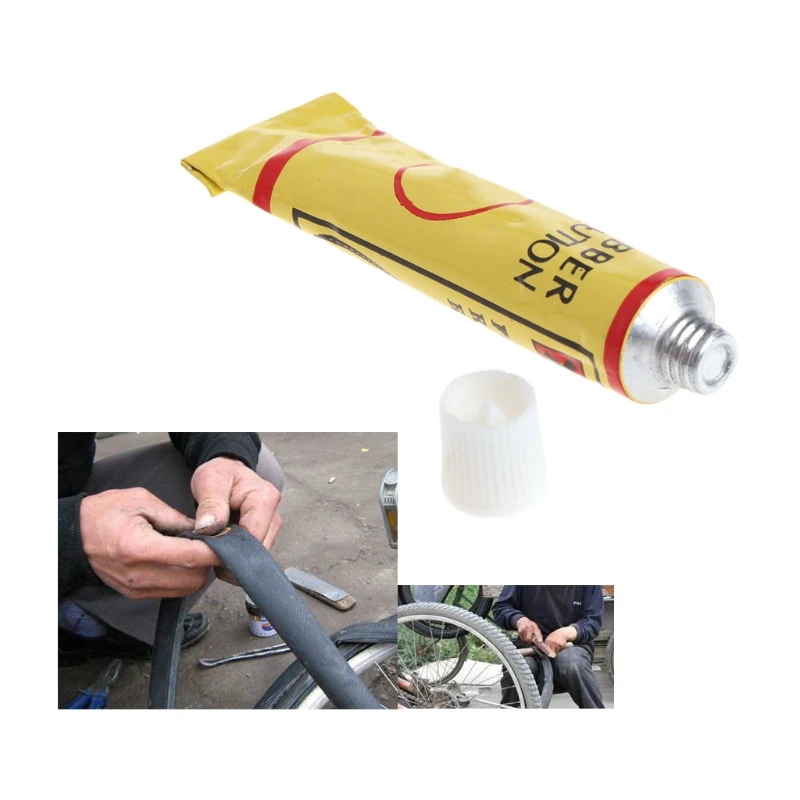 If they are available in different sizes and it is not clear what the actual size of the puncture is, it is better to take a larger patch. After the glue has dried, it is recommended to pump up the chamber to check if there are any other holes and if the patch is not letting air through. If everything is fine, you can install the camera in the tire and put the latter on the wheel rim. nine0003
If they are available in different sizes and it is not clear what the actual size of the puncture is, it is better to take a larger patch. After the glue has dried, it is recommended to pump up the chamber to check if there are any other holes and if the patch is not letting air through. If everything is fine, you can install the camera in the tire and put the latter on the wheel rim. nine0003
There are a few tricks to make repairing a bicycle tube puncture more comfortable.
Tire repair not possible.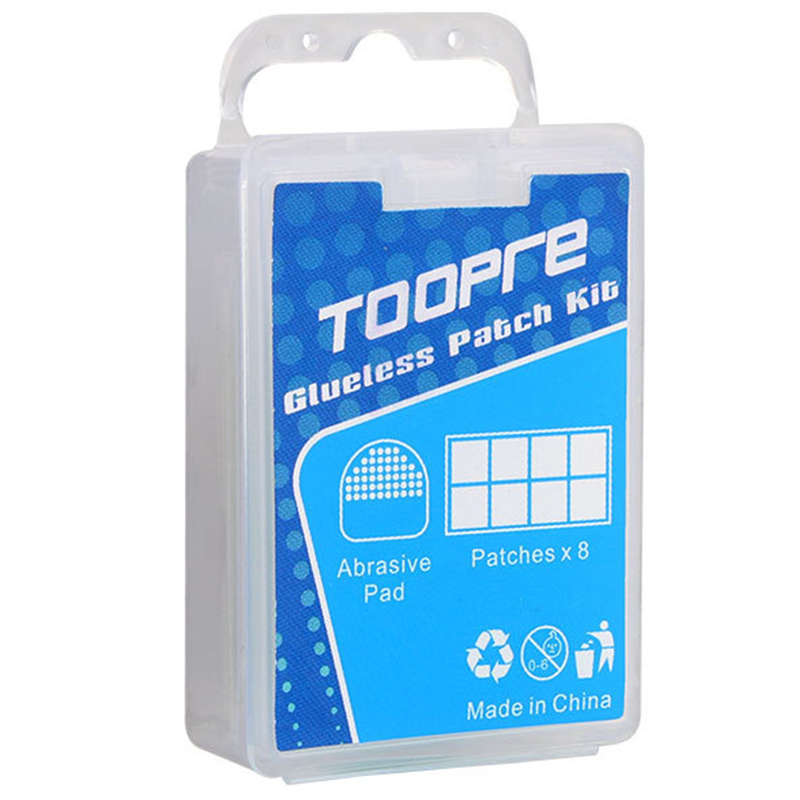 They can only be replaced with new ones. On the other hand, they rarely break through enough to require replacement. Usually tires are changed as they wear out, when the tread is completely worn out. Less often, replacement is required in cases where tires are badly damaged due to punctures, impacts, exposure to chemicals and other factors. But the camera can be changed less often. She is able to survive a very large number of punctures, but after another hole, when there is no living place on her, it is still better to replace her. You will also have to change the camera if the nipple is damaged, in which case repair is also impossible. nine0003
They can only be replaced with new ones. On the other hand, they rarely break through enough to require replacement. Usually tires are changed as they wear out, when the tread is completely worn out. Less often, replacement is required in cases where tires are badly damaged due to punctures, impacts, exposure to chemicals and other factors. But the camera can be changed less often. She is able to survive a very large number of punctures, but after another hole, when there is no living place on her, it is still better to replace her. You will also have to change the camera if the nipple is damaged, in which case repair is also impossible. nine0003
To summarize: when traveling, especially over long distances, you should always have a complete repair kit with you and remember the tricks that we have described in this article.
Puncture of a bicycle inner tube is a nuisance that has happened to every cyclist at least once. Let's talk about how to seal a bicycle chamber at home, how to choose an adhesive composition, how to accurately find out the puncture site. nine0003
Let's talk about how to seal a bicycle chamber at home, how to choose an adhesive composition, how to accurately find out the puncture site. nine0003
If you have a long and long bike ride, it is advisable to take not only a set of tools, but also additional "rubber". In case of accidental violation of the integrity of the cycle chamber, you can quickly replace it and continue the journey. The algorithm for removing a bicycle tire is as follows. nine0003
The algorithm for removing a bicycle tire is as follows. nine0003
Do not use wooden or metal objects when removing a tire. The former may have burrs. And the metal can damage the coating of the rim, so that the amount of gluing will increase. Do not use sharp objects either, as both the tire and the camera may be damaged.
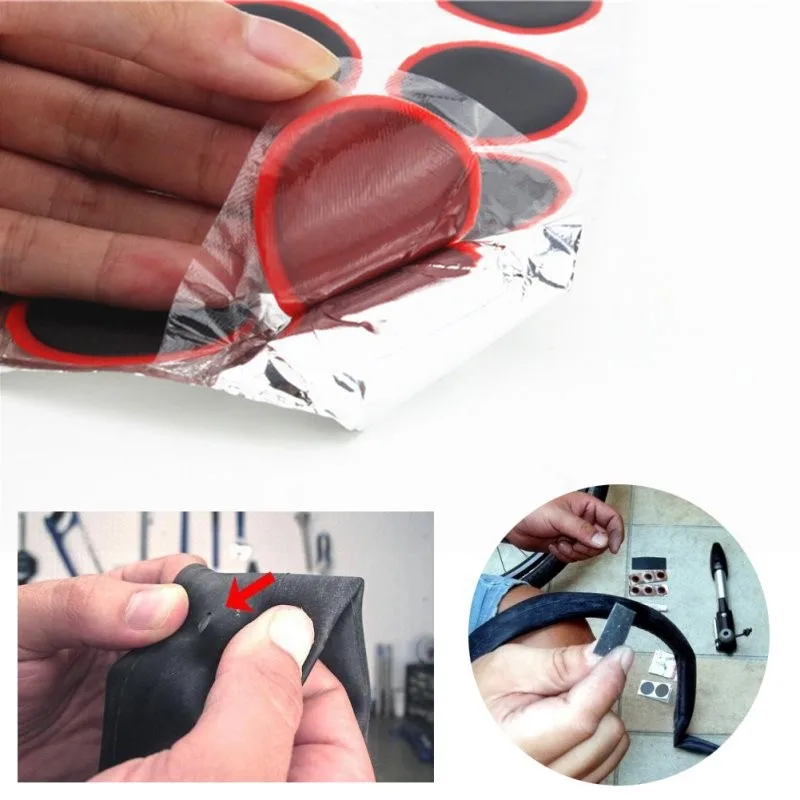 Put the remaining tire bead back in place;
Put the remaining tire bead back in place; This task is not as simple as it might seem. It is somewhat simplified if we take into account that most of the damage occurs in the lower 2/3 of the total height of the chamber. But there are exceptions: damage to a broken rim tape or metal threads of a bicycle tire cord.
Find damage at home, for subsequent gluing, you can use these methods.
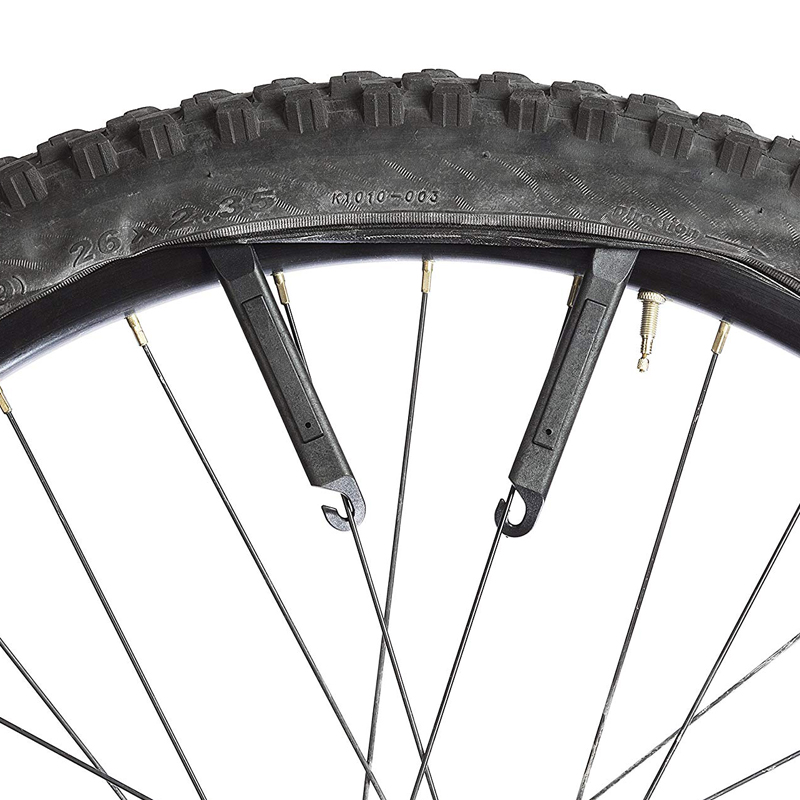 As in the previous description, it is desirable to pre-increase the pressure inside the rubber; nine0020
As in the previous description, it is desirable to pre-increase the pressure inside the rubber; nine0020 Please note that not all compounds are suitable for sealing punctures in bicycle inner tubes. Consider a few win-win options for home repairs.
Many bicycle companies produce special repair kits. The repair kit includes. nine0003
The composition of the adhesive is matched to the material of the patches included in the kit. Not surprisingly, gluing with other materials can be ineffective. The amount of glue is strictly calculated on the number of gluing.
Despite the prejudice against Chinese products, these bicycle kits have performed quite well.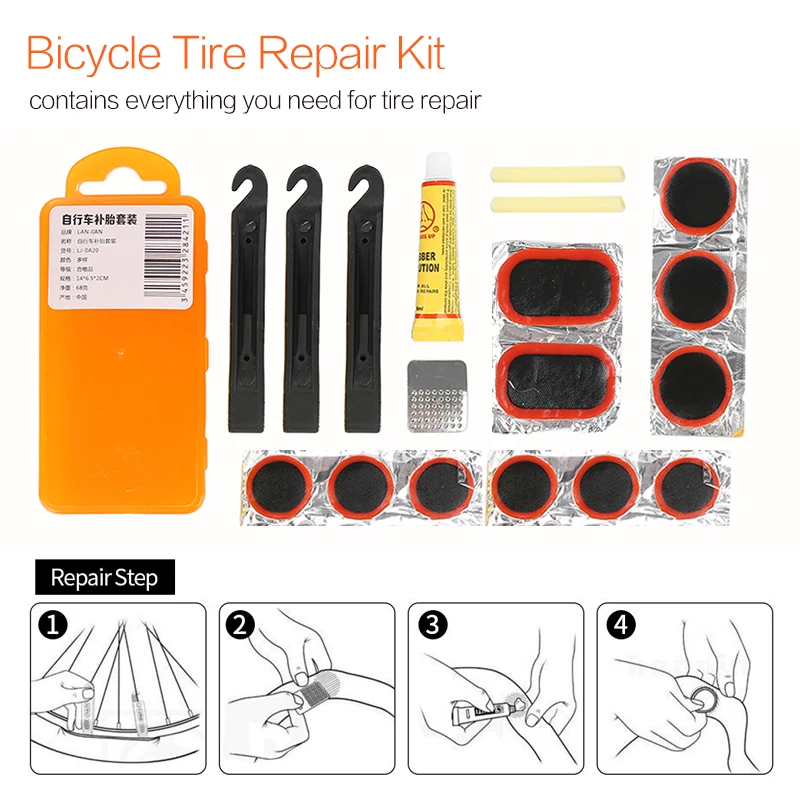 And, in comparison with famous brands, the cost of Chinese bike kits is much lower. But there is also a minus. The gluing kit includes only patches and glue, and the latter is clearly not enough. nine0003
And, in comparison with famous brands, the cost of Chinese bike kits is much lower. But there is also a minus. The gluing kit includes only patches and glue, and the latter is clearly not enough. nine0003
Of all the sealing options, this is the least reliable. As an adhesive, you can use any rubber adhesive. The latter must be selected so that it does not burst on the bends when gluing. As for the reliability of gluing, here it is pure luck. As they say, at your own peril and risk.
This is a good and reliable method, but only if you go to a good bike repairman. It is rather difficult to carry out vulcanization at home on your own; out of habit, there is a risk of hopelessly ruining the bike chamber. In the field, this cannot be done at all. nine0003
nine0003
So, you have found the place where the bicycle rubber was damaged. Now is the time to start repairing at home and seal the damage. This is the order of gluing.
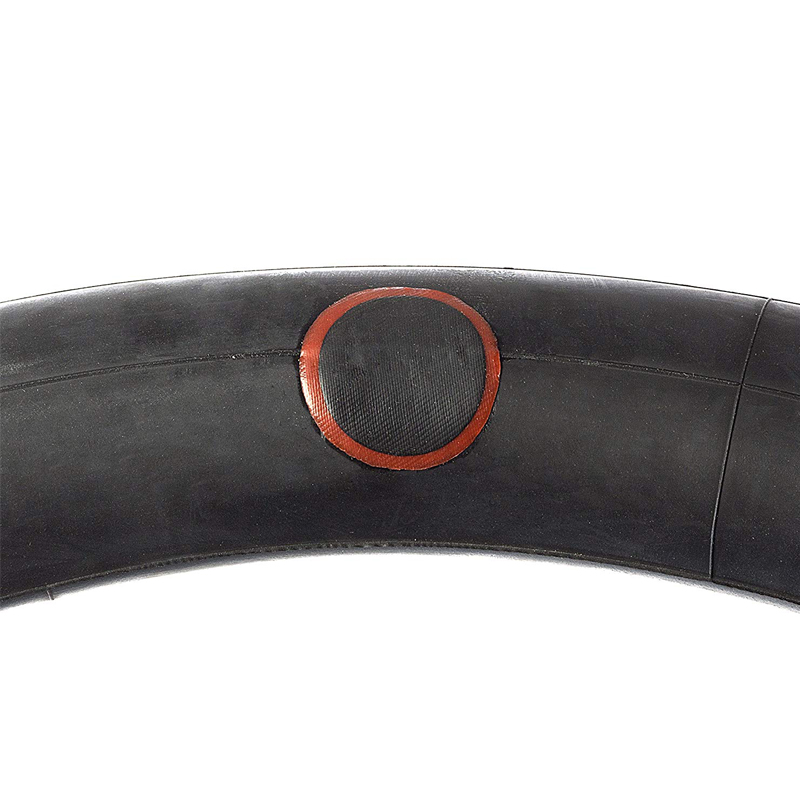 Pay attention to the indicators indicated in the instructions: the duration of exposure to air and the period of time required for the complete polymerization of the adhesive;
Pay attention to the indicators indicated in the instructions: the duration of exposure to air and the period of time required for the complete polymerization of the adhesive; Many people say that you can ride a bike immediately after sealing, but it is advisable to wait about half an hour.
So, you did everything right, but the camera still deflates over time, despite the sealing. The reasons may be the following.
